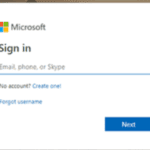
Even the more experienced SEO experts forget to take into consideration the power of internal linking. If the backlinks from other sites become tougher to get as people are using the wrong techniques, you need to use linking strategies offered by monthly SEO packages, a sure way to bring terrific SEO results. There is no one good internal linking strategy that can be used for all websites. However, it is the base that matters most. You need to build your website properly from the beginning and keep the fundamental concepts in mind to have a quality linking structure in place for longer periods.
Advantages of internal linking
There are three major advantages associated with internal linking. First, it helps in the navigation through the website, second, it defines the website architecture and hierarchy. The third is that it is responsible for distributing page authority and ranking power throughout the website. The third is the most significant aspect of internal linking. There are many theories associated with strategies for internal linking. Most of these theories are great sounding prognostications. However, there is some merit in the prophecy that Google values and ranks the website taking into consideration the internal ranking network. The basic idea is that the internal ranking strengthens the overall SEO of a site. The internal ranking paves the way for spiders, prolonged browsing sessions from users, and a closely-knit network containing posts and pages.
Strategies to boost SEO through better internal linking
1. Create a lot of quality content
For creating many internal links there is a need for having many internal pages. The first step toward having a good internal linking approach is to have a killer content marketing strategy. It is not possible to avoid each other. A lot of content also means a lot of linkable content. For instance, if you are talking about gift tag templates, make sure to link a website that displays the best offers. The more the links to different places the better it is for the internal linking strategy. Making internal linking strategies propose the use of complex layers of various pages, content silos, and mathematically balanced formulas for links to pages.
For developing useful content that is rich with keywords you will need a content marketing strategy. Although the internal linking opportunities need to occur naturally, you may use long-tail keywords for moving things in the right direction. Use translation services to translate the content into other languages and expand the limits of your content. If you ever feel like you’re stuck and no creativity is coming out of you, change the working environment, if you’re working from the office change to working remotely from home, if that doesn’t work either, change to coworking spaces and let diverse workspaces inspire you.
2. Using anchor text
By keeping true to the content theme for internal linking the links within the content need to use anchor text rather than linked images. It is fine to use image links but images cannot be the main source for links. The images need to be correctly alt-tagged as well. There are other issues with the correct use of anchor text such as you are not going to optimize the anchors. Use un-optimized natural fragments of sentences for anchor text and you will be fine. Do not attempt any extra tricks. Highlight them and link them, that’s it.
3. Link deeper
The deeper your links are better it is for the link structure. There are two kinds of links you need to avoid though. First is the link to the Home page. Many websites have far too many links to the Home page. You are better advised to strengthen the internal pages for boosting the SEO of your website instead of just pointing more and more links to the Home page. The second is a link to the Contact Us page. This is another common mistake made by many people just beginning in the field of content marketing. These links are added at the end of a post with a call of action and it is linked to the Contact Us page by using some anchors. Never use the Contact Us page for linking unless it is necessary. Generally speaking, you need to avoid links to the top pages of your website as the main menu already has links pointing to them.
4. Using relevant links
Internal linking is not as scientific and rigorous as many people think. However, you will need to be intentional about their placement. Never link for the sake of it. Always link the content that is relevant to the context of the source. As far as possible you can link to the relevant content from your internal linking as well.








